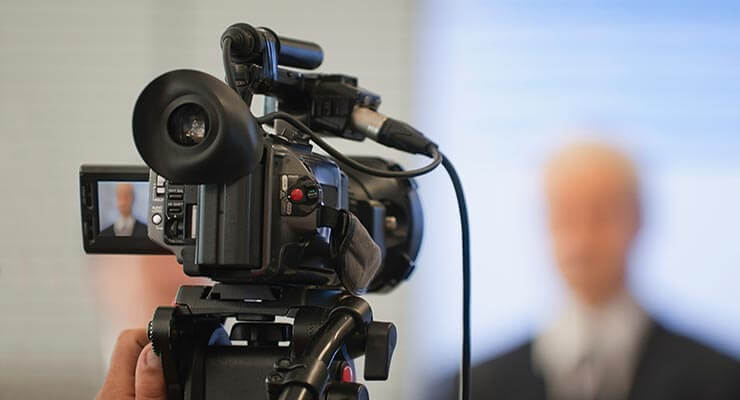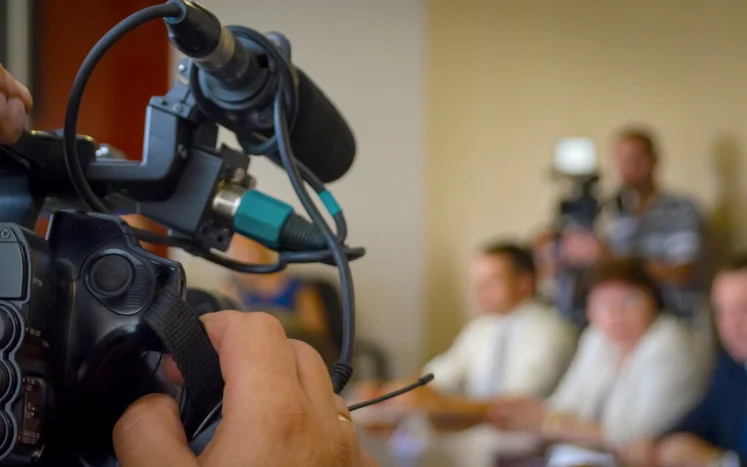Legal Videography: A Effective Tool for Ensuring Courtroom Transparency
Legal Videography: A Effective Tool for Ensuring Courtroom Transparency
Blog Article
Why Legal Videography Is Essential for Accurate Court Recordings
The role of legal videography in court room setups can not be overemphasized, as it works as a crucial device for maintaining the stability of court records. By recording both spoken and non-verbal communication, it boosts the clearness of witness statements and shows the nuances of court interactions. This extensive documentation not just aids in lowering prospective misunderstandings but additionally supports appellate reviews, consequently strengthening the judicial procedure. Nevertheless, the implications of incorporating legal videography right into typical court room methods raise crucial questions concerning its wider influence on the lawful system. What might these implications require?
Significance of Visual Evidence
In the world of lawful procedures, the significance of aesthetic proof can not be overstated. Visual proof works as a powerful tool in establishing realities, substantiating testaments, and boosting the total clarity of a situation. This kind of proof, that includes pictures, video clips, and layouts, can provide a tangible context that verbal descriptions typically do not have, consequently using courts and courts a clearer understanding of the scenarios surrounding a situation.
Additionally, visual evidence aids in the retention of information. Human cognition is inherently aesthetic, and individuals are extra most likely to bear in mind and understand info provided in a visual format. In the courtroom, this can be crucial, as engaging aesthetic proof can persuade opinions and reinforce the narrative offered by lawful agents.
Furthermore, the use of visual evidence can minimize misconceptions and obscurities that commonly develop from spoken exchanges. By offering a direct depiction of occasions, aesthetic evidence helps to remove subjective analyses and promotes a more unbiased exam of the truths. As a result, the integration of visual proof right into legal proceedings not only reinforces the honesty of the judicial procedure however also enhances the possibility of achieving a simply end result.
Recording Non-Verbal Hints
Utilizing sophisticated videography methods can significantly boost the capture of non-verbal cues throughout legal procedures. Non-verbal communication, consisting of facial expressions, body movement, and eye contact, plays a critical role in sharing feelings and intentions that might not be clearly mentioned in verbal testament. legal videography. Legal videography utilizes high-def cameras and calculated angles to ensure that these subtle hints are videotaped with clarity and precision
The capacity to assess non-verbal behavior can supply beneficial context to statements made during court sessions. A witness's hesitation or confidence can be interpreted through their position or motions, possibly affecting the court's perception of trustworthiness. Additionally, making use of close-up shots can aid concentrate on an audio speaker's expressions, permitting for a more nuanced understanding of the testimony.
In addition, incorporating numerous electronic camera angles can develop a thorough sight of communications, highlighting characteristics between celebrations included. This diverse method not only enhances the precision of the court document yet likewise aids in protecting the integrity of the judicial process - legal videography. Ultimately, recording non-verbal signs with legal videography fosters a richer, more full depiction of court procedures

Enhancing Testimony Integrity
The dependability of testament can be substantially reinforced via using top notch lawful videography. Video clip recordings act as an unbiased tool that captures not only the spoken words of witnesses but likewise the nuances of their delivery, including tone, pacing, and psychological expressiveness. This multifaceted documentation offers a more clear understanding of the witness's reputation and intentions, which can be pivotal in legal proceedings.
Additionally, lawful videography decreases the possibility for misconceptions that might occur from created records alone. When jurors can observe a witness's temperament and body movement in combination with their testament, they are better furnished to examine the authenticity and integrity of the evidence provided. This visual context can enhance the testimonial narrative, making it more compelling and qualified.
Additionally, the visibility of a video recording can discourage potential incongruities in statement. Witnesses might be more careful in their declarations when they know they are being tape-recorded, bring about more accurate and truthful accounts. In general, high-grade legal videography enhances the integrity of testament, ensuring that the court has accessibility to a total and sincere depiction of the truths as conveyed by the witnesses.
Supporting Appeals and Reviews
Legal videography plays a critical duty in sustaining allures and reviews by supplying a thorough visual document of courtroom proceedings. This aesthetic paperwork catches not just the talked words of witnesses and attorneys however additionally the subtleties of body language, tone of voice, and court characteristics. Such helpful hints aspects can be critical in recognizing the context of statements and debates offered.
In the appellate procedure, where the emphasis is on errors of law and step-by-step fairness, a video document can work as a vital device for appellate courts. It makes it possible for judges to evaluate the original test context, guaranteeing that choices are based upon a complete understanding of the proceedings. The capability to visually examine the attitude of witnesses or the communications between events can disclose insights that created transcripts might forget.

Additionally, lawful videography can help in clearing up uncertainties in statements or procedural rulings, thus enhancing the basis top article for an allure. By using a dependable, unbiased account of what taken place in court, lawful videography not just supports the stability of the lawful process but also equips all celebrations included to make enlightened choices regarding their situations.
Improving Court Room Procedures
Enhancing court room effectiveness, legal videography enhances processes by giving prompt access to visual records of process. This modern technology enables judges, lawyers, and juries to revisit vital testimony and evidence, guaranteeing that all celebrations have a clear understanding of the instance. By capturing the nuances of spoken and non-verbal interaction, videography improves the record, making it less complicated to understand the context and weight of statements.

Furthermore, video clip recordings can help with remote engagement in hearings, permitting additional reading higher versatility in organizing and involvement, which is specifically valuable in complicated situations involving several stakeholders.
Conclusion
Finally, legal videography plays an essential duty in making certain accurate court recordings by providing crucial visual evidence that captures both spoken and non-verbal interaction. This practice improves the dependability of testaments, sustains appellate evaluations, and enhances court room procedures. By cultivating a thorough understanding of court characteristics, legal videography eventually adds to more fair judicial end results, reinforcing the stability of the legal system and helping with notified decision-making.
Report this page